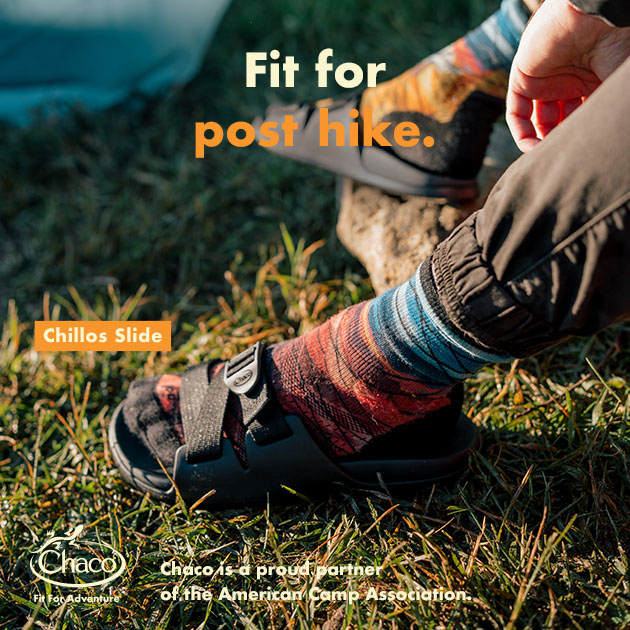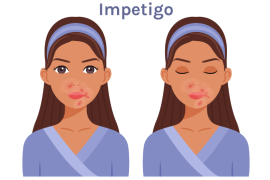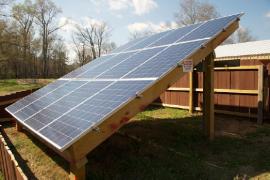Summer 2020 impacted every aspect of camp, and regardless of how things played out — with various scenarios of camp running in some form or not at all — building next summer’s staff team weighs heavily on our minds. All our default systems and timelines seem useless right now, prompting so many questions and very few answers. For instance:
- How do we motivate staff to buy in to the unknown of this coming summer?
- How do we compensate for the gap in leadership experience for staff not at camp this past summer?
- How are we going to view, describe, and remember this summer?
- How do we create a positive camp experience for kids (and staff) after they’ve been cooped up and trapped in a virtual world where almost nothing has been business as usual?
Culture Reflects Values in Action
The more unanswered questions there are, the more panicky we feel. And when in panic mode, everything (vision, focus, confidence, routines, courage, hope — you name it) very often goes out the window. Paralysis can set in, making it almost impossible to move with confidence toward the culture we crave. Staff culture and camp culture are tied together. In fact, the culture your staff embraces and models is your camp culture.
We recognize that some staff hired for 2020 did not work at camp at all. The camp experience for others may not have been what they signed on for due to a shorter season, smaller numbers of campers, activity schedule limitations, time-off restrictions, and other COVID-19-related implications. Some staff found themselves in a virtual or hybrid setting instead of being fully in person. A small number of staff even worked at different camps because their original camps suspended programming. Yes, 2020 was one for the books, but this does not mean that we throw our hands in the air and compromise the values we have worked hard to put in place with regard to camp culture!
Instead, let’s explore how we can engage and propel staff toward next summer without skipping a beat. We’ll first look at how panic leadership is detrimental to staff/camp culture in the long term. Then we’ll explore framing the current situation in a way that invites staff dedication to the mission of building community and connection, developing a communication plan leading up to the summer, and keeping veteran/new staff connected and committed with fresh ideas.
Panic Leadership
Identifying our stress and the root of what is knocking us off course helps acknowledge where we are spending energy. We often talk about being a "stress detective" when it comes to determining any barriers that may be getting in the way of your staff’s success. But this time we encourage you to think about the stressors you are facing.
- What stressors are getting in your way and keeping you from being able to move forward?
- Can you learn from or reduce any of these stressors?
- What are your unmet needs?
- Which members of your team have the necessary skills that might fill a current need or gap?
Recognize that the stresses hitting you between the eyes right now are most likely different than you’ve experienced in the past. Some of these stress points are within your control; others may be completely out of your hands. Taking subtle steps may provide some relief, or the time may come when you are able to let go or ask for help.
If we pay attention, stress can be a dashboard light that informs or reminds us of what is important (and aligned with our values).
Framing the Summer
Keeping these values front and center in our leadership and decision-making can help us bring our vision into focus as we strive to maintain our camp culture and create a better sense of our priorities. This will establish a roadmap to keep these values in mind as we plan for the summer, knowing that uncertainty and flexibility are inevitable. It should also facilitate bringing staff on board and committing to a different summer.
In one of several student panels conducted as part of the ACA, Southeastern Fall Camp Conference and ACA, Southeastern Community Connection, a student/staffer eloquently stated that "Never has ‘I don’t know’ been uttered so much in a given period of time." That insight offers us a golden opportunity to model for staff how to handle the unknown and be adaptable to whatever situation is thrown our way. It is OK not to have the answer to every question. Own it. Be transparent about it. This is the very thing we want our staff to demonstrate for campers. What better way to learn than from you?
Find comfort in knowing that there is power in "yet." As we all prepare to build our staff team for next summer, we don’t have to know it all yet. We are not expected to have all the answers on how COVID-19 will impact camp operations yet. We do not need to have clarity on what the summer is going to look like for staff yet. Yet is a small but mighty word. It allows us to take a step back and gain a new perspective that frees us from staying rooted in our "old normal."
For staff to buy into a different summer, we must frame the crisis in a way that they can get their minds around it and act (commit). More so now than ever, this is relatively easy considering the alternative of being cooped up and stuck in a virtual world for days, weeks, and months on end. Kids don’t return to camp for activities. They come back for relationships. Spending a summer at camp provides connection and a caring community in a time when youth desperately need a healthy dose of both after months of living in isolation. Staff can buy into that because they have also experienced it. Using this context will draw staff and inspire their dedication to creating a positive camp culture.
While we are confident that more camps will be open in 2021 than in 2020, we will still be dealing with the effects of COVID-19 in some fashion. But the spirit of camp can still happen while wearing masks, physically distancing, and operating in cohorts. Among the surprises from 2020 were repeated testimonies from staff about how close they became with their groups because of their increased time together. In fact, one student/staffer shared that "camaraderie was through the roof" at his camp. Even if camp has a virtual component in 2021, there will still be much-needed opportunities for near-peer role models (our staff) to connect in meaningful ways — ways that are different from what kids experience with their parents or teachers.
More (Not Less) Communication
Coming through loud and clear, the theme for 2020 from the staff perspective was more, rather than less, communication. However, there is a fine line between communicating timely and useful information and just adding to the noise — so it might be advantageous to differentiate social media from other kinds of information sharing.
Social media (e.g., Instagram, Snapchat, Facebook, TikTok) is best for providing indirect communication that is broadcast to the entire camp community. Information that needs to be relayed to varying audiences (staff, parents, alums, etc.) should take on a more direct line of communication and is best conveyed using separate avenues like texts, email, Group Me, and WhatsApp. Before posting anything to public platforms, make sure those directly affected by the information are told first; this may include staff, families, and donors. They should not learn camp information from public social media posts.
Pandemic or not, ongoing communication with staff is key. The content will largely depend on time of year and proximity to the camp season. And clear communication is crucial — especially regarding why specific procedures and policies are being put into place. Don’t assume that staff understand why; explain it to them. Transparency builds trust even when the unknowns outweigh the facts.
Engagement Ideas
Invite staff into the conversation to figure out overall camp challenges or those specific to their areas (programming/campers/training). Empower staff to problem solve and assist with contingency plans for 2021 in ways that allow for choice in where/how they spend their energy, such as:
- Bringing staff in early to do physical work (especially those who are finished with school in May)
- Developing curriculum/lesson plans
- Creating adaptations for activities and special events
- Offering virtual programming for campers
- Enlisting social media hype
- Brainstorming ideas for time off
That last point will be critical, given that staff may be required to stay at camp for the duration of their contracts or there may be a need to create safe socialization opportunities with day camp staff before they go home in the evenings or on weekends. Seeking staff input in some or all these areas will pay off in the long run in their commitment to camp and happiness while working there.
Another way to engage staff in the months leading up to summer is to arrange for an alumni panel (perhaps via Zoom) to showcase how skills learned by working at camp play out in various careers. It will be beneficial to have diversity in the professions, geographic location, and field experience represented so that staff can identify and visualize their future selves. Alumni should also include skills developed at camp (including flexibility, adaptability, problem solving, etc.) that have been particularly helpful in the transition to the current challenges we face both personally and professionally.
Staff not only missed out on camp jobs in 2020, but they also missed out on internships and other networking opportunities. Widening the camp circle to include alumni will provide key connections between camp and the real world. And their involvement may well be the trigger that reminds alumni of the value of the camp experience and ignites a desire to return in some capacity (or send their children).
It’s impossible to overemphasize the value of professional development for staff between now and the start of the camp season. This will help fill the gap in leadership experience for staff who were unable to work at camp last summer and it should be accessible and affordable because most can be virtual. Having a conversation with staff offers an opportunity for you to check in and partner with them to determine which sessions, webinars, or podcasts best fit the goals of each individual and their role at camp.
A student panelist gave this great advice: "Don’t make staff figure out what skills camp provides." Tell them now what skills will be practiced this summer instead of giving them a handout post camp that helps translate their summer experience. Current and prospective staff are looking for opportunities with a "growth zone." Connect the dots up front on what they will learn at camp. This path can then lead to workshops on résumé building, interviewing, etc.
Less variety in the daily schedule to allow for cohorts and smaller groups may cause concern that your camp staff will become bored. To ensure they stay motivated through the daily grind, consider changing up programming. One simple way to offer flexibility without disrupting the bubble or established pods is to adjust the length of activity periods on different days to allow for 60-, 90-, or even 180-minute classes. This can create opportunities for both campers and staff to enjoy short activities on some days and take deeper dives into a program area or an excursion (such as a hike or canoe trip) on others.
One final thought is to utilize an innovation technique inspired by co-founders of Summer Camp Innovation Network Daniel Shore and Stephen Brand that pushes staff to come up with out-of-the-box solutions for any challenge. They held several "hack-a-thon" events in which camp staff were presented with a prompt and then given the time and tools to reimagine the problem and brainstorm ideas for how to do it better. Using this or a similar strategy can help get past being stuck in your thinking, collaboratively derive creative solutions to the toughest challenges, and move your camp culture forward — not to mention model what we want staff to do with campers!
Camp culture is a reflection of values in action. COVID-19 aside, a return to our values puts down an anchor and acts as a compass to give us direction (crisis or not). Ironically, culture also reflects the inaction of values. If we don’t put our values to work, we go nowhere — to the detriment of our campers and staff. It is possible to put one foot in front of the other without skipping a beat. Your camp culture (and future) depends on it.
Related Resources:
- ACA Professional Development Events: ACAcamps.org/staff-professionals/events-professional-development/events
- Camp 4U — bite-size staff training: guideinc.org/camp4u
- SCampCon — free virtual conference: summercampcon.com
- Project Real Job — infographics, videos, social assets, blogs, etc.: ACAcamps.org/resource-library/jobs-recruitment/project-real-job
Jolly Corley, MS, works each summer at Camp Robindel developing 120 emerging leaders to create a dynamic and thoughtful camp culture through staff development. Using games, theatre, and life experiences, she prepares staff to understand that our own experiences are the most useful tools for reflection and growth to a solid foundation in becoming leaders for life. Her work takes her around the world providing training to develop a staff culture that promotes personal and professional growth. Check out jollycorley.com for more information.
Kim Aycock, MST, has 35+ years of experience developing young people with skills robots are unable to do. Blending the talents of a master teacher with the knowledge of a seasoned camp expert, Kim ignites the learning for varying levels of campers and staff worldwide. She connects with and motivates learners of all ages through her interactive and innovative presentations (both in person and virtually). Kim speaks professionally at regional and national conferences, contributes regularly to Camping Magazine and ACA blogs, and serves as co-chair of ACA’s Project Real Job Committee. More information can be found at kimaycock.com.
Photo courtesy of Camp Romaca, Hinsdale, Massachusetts



